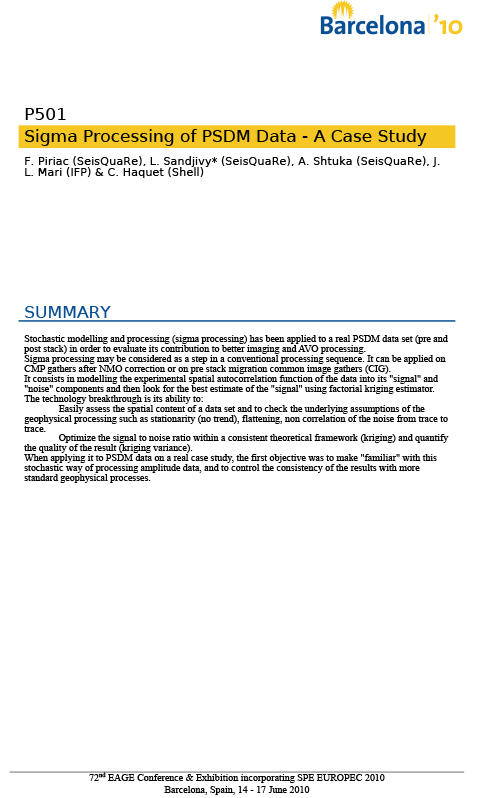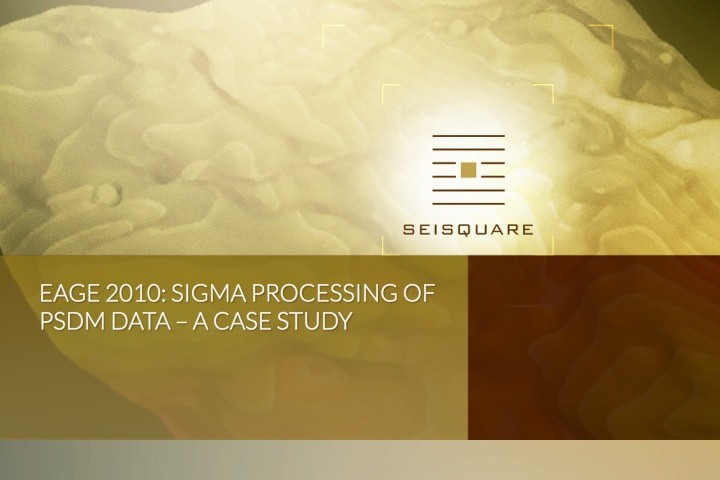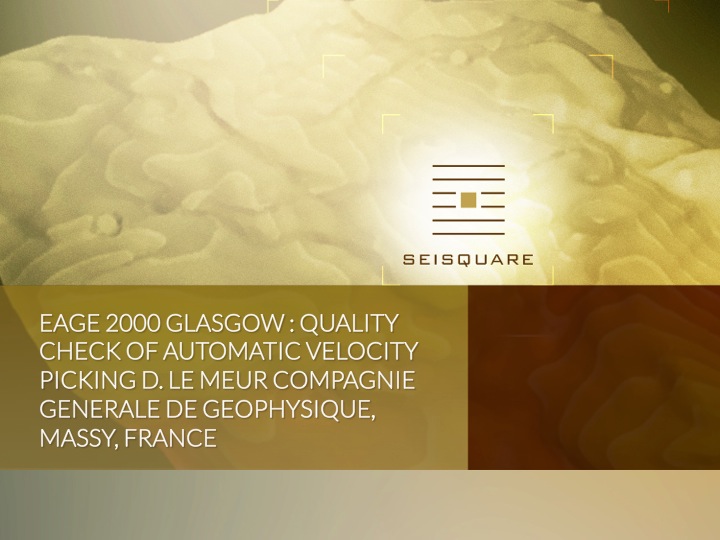Stochastic modelling and processing (sigma processing) has been applied to a real PSDM data set (pre and post stack) in order to evaluate its contribution to better imaging and AVO processing. Sigma processing may be considered as a step in a conventional processing sequence. It can be applied on CMP gathers after NMO correction or on pre stack migration common image gathers (CIG). It consists in modelling the experimental spatial autocorrelation function of the data into its “signal” and “noise” components and then look for the best estimate of the “signal” using factorial kriging estimator. The technology breakthrough is its ability to: Easily assess the spatial content of a data set and to check the underlying assumptions of the geophysical processing such as stationarity (no trend), flattening, non correlation of the noise from trace to trace. Optimize the signal to noise ratio within a consistent theoretical framework (kriging) and quantify the quality of the result (kriging variance). When applying it to PSDM data on a real case study, the first objective was to make “familiar” with this stochastic way of processing amplitude data, and to control the consistency of the results with more standard geophysical processes.



